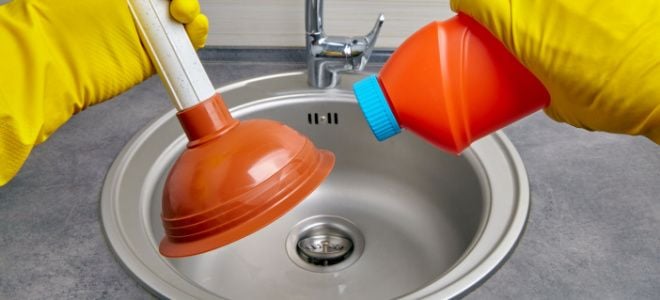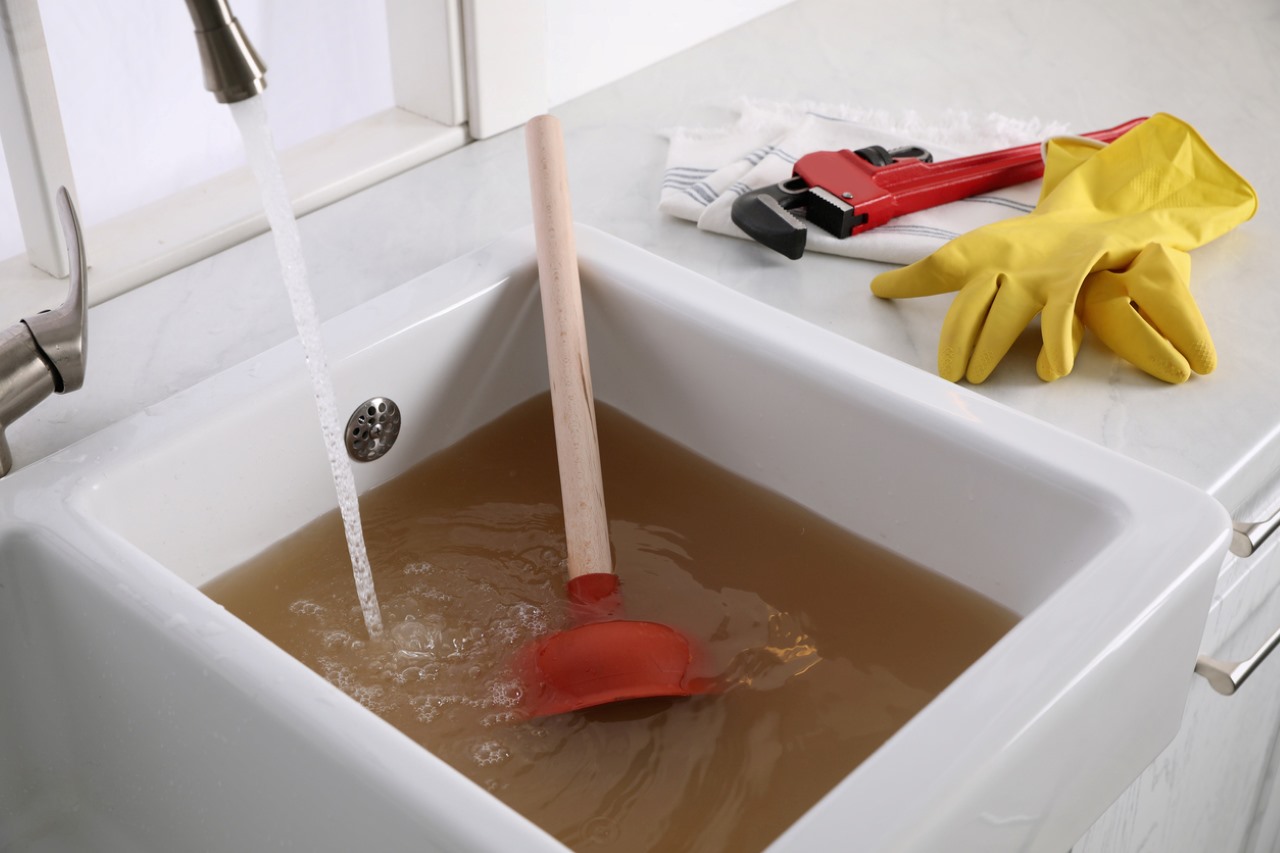Successful Plunger and Drain Cleaner Strategies: Best Approaches
Successful Plunger and Drain Cleaner Strategies: Best Approaches
Blog Article
What're your concepts about Tips on How to Effectively Use a Plunger?

Introduction
Correct maintenance of household drains pipes is necessary for avoiding obstructions and making sure smooth water flow. Among the secret tools in every homeowner's toolkit is the bettor, together with numerous drain cleansers developed to take on stubborn blockages effectively. This post checks out how to utilize plungers and drainpipe cleansers efficiently to maintain your drains pipes streaming freely.
Section 1: Comprehending Bettors
Types of Plungers
There are numerous types of plungers offered, each designed for different sorts of drains pipes and clogs. The most common types include cup plungers, flange plungers, and accordion plungers.
How Plungers Work
Bettors work on the concept of creating stress and suction to displace obstructions. When effectively used over a drain, they create a vacuum that can take out particles or break up obstructions.
Choosing the Right Plunger
Picking the appropriate plunger depends on the type of drainpipe and the nature of the obstruction. Mug plungers are suitable for sinks and bathtubs, while flange bettors are better fit for bathrooms because of their style.
Typical Errors with Plungers
Preventing these errors makes sure efficient plunging: incorrect seal around the drain, insufficient pressure, and unclear surrounding debris.
Area 2: Utilizing Plungers Successfully
Preparation
Prior to diving, ensure the plunger covers the drainpipe completely and forms a limited seal. Clear any type of noticeable particles around the drain opening.
Technique
Start with mild diving activities to build suction. Increase stress slowly, utilizing a consistent rhythm. Repeat as essential till the drainpipe gets rid of.
Fixing Tips
If diving doesn't work, try readjusting the seal, applying petroleum jelly for a far better seal, or using a different kind of plunger.
Area 3: Recognizing Drain Cleaners
Sorts Of Drainpipe Cleaning Company
Drain cleaners can be chemical or enzymatic. Chemical cleaners utilize solid chemicals to dissolve blockages, while enzymatic cleaners use all-natural enzymes to break down organic matter.
How Drain Cleaning Company Job
Chemical cleansers react with blockages to dissolve them, while chemical cleansers break down organic products like hair and oil without harming pipelines.
Safety Considerations
Constantly put on handwear covers and eye defense when making use of chemical drain cleansers. Make certain sufficient air flow and comply with maker instructions carefully.
Eco-Friendly Alternatives
Think about using vinegar and baking soda or enzyme-based cleansers for environment-friendly alternatives that are more secure for pipelines and the setting.
Section 4: Using Drainpipe Cleaners Efficiently
Application Techniques
Pour chemical cleaners directly right into the drainpipe opening. Permit them to help the suggested time prior to flushing with hot water. Enzymatic cleansers must sit overnight.
Precautions
Prevent mixing different types of cleaners, as this can create toxic fumes. Never make use of chemical cleaners in conjunction with a plunger, as spilling can occur.
Managing Persistent Blockages
For relentless clogs, think about making use of a plumbing snake or calling a specialist plumbing to avoid damages to pipelines.
Verdict
Finally, understanding how to utilize bettors and drainpipe cleansers properly is important for preserving healthy plumbing systems. By choosing the right tools and methods, home owners can deal with small obstructions and protect against major pipes problems down the line.
How To Properly Use A Plumbing Snake To Clear Drains
When any drain clogs in our home arise, we tend to gravitate toward the plunger and little else. In cases where the plunger and its vacuum-created pressure are not able to clear clogs, many immediately move to harmful chemicals or simply call their plumber to fix the issue.
we’re happy to help with all drain cleaning needs and concerns. This includes informing you on a few other home remedies you may have at your disposal for minor to moderate clogs, one of which is the use of a plumbing snake. Many people have never used one of these before – let’s go over the steps to take when your drain clogs and you have a plumbing snake available.
Attempt Plunger Use
The first step here, as we noted above, should indeed be to grab your plunger when you notice a drain clog and attempt to resolve it this way. If you’re unsure how to use a particular type of plunger, our plumbers can answer any questions you have. If this doesn’t do the trick, however, you move on to the snake.
Locate And Prepare Snake
A plumbing snake is a metal or plastic device that’s generally about a quarter of an inch thick. It’s design with significant extensions, meant to reach down into your clogged drain and push the clog out. Snakes also contain drain augers that will latch onto and push stubborn blockages.
If your plunger doesn’t clear a clog, locate your snake and bring it to the drain in question. We also recommend keeping a bucket nearby to collect the clog once you pull it out, plus we’d advise wearing goggles and possibly protective gloves.
Feed Snake
Once you’re ready to go, feed the snake slowly down the drain, using the crank device it comes with to keep it moving until it finds the clog. Once this happens, much of the clog will be latched onto the coil so you can pull it out, while the rest will simply break up and flow downward.
Detach Debris
Remove the snake slowly from the drain, and once you’ve done so, pick off any debris that’s stuck to the coil. This is another area where wearing gloves is a must.
Flush Drain
Finally, take a few minutes to ensure the snake has done its job correctly. If you’ve been using it on a toilet, flush the toilet a couple times and make sure everything flows well. If you’ve used it on a different drain, flush it with some room temperature water.
https://www.mybuddytheplumber.com/blog/how-to-properly-use-a-plumbing-snake-to-clear-drains/

Application Techniques
Pour chemical cleaners directly right into the drainpipe opening. Permit them to help the suggested time prior to flushing with hot water. Enzymatic cleansers must sit overnight.
Precautions
Prevent mixing different types of cleaners, as this can create toxic fumes. Never make use of chemical cleaners in conjunction with a plunger, as spilling can occur.
Managing Persistent Blockages
For relentless clogs, think about making use of a plumbing snake or calling a specialist plumbing to avoid damages to pipelines.
Verdict
Finally, understanding how to utilize bettors and drainpipe cleansers properly is important for preserving healthy plumbing systems. By choosing the right tools and methods, home owners can deal with small obstructions and protect against major pipes problems down the line.
How To Properly Use A Plumbing Snake To Clear Drains
When any drain clogs in our home arise, we tend to gravitate toward the plunger and little else. In cases where the plunger and its vacuum-created pressure are not able to clear clogs, many immediately move to harmful chemicals or simply call their plumber to fix the issue.
we’re happy to help with all drain cleaning needs and concerns. This includes informing you on a few other home remedies you may have at your disposal for minor to moderate clogs, one of which is the use of a plumbing snake. Many people have never used one of these before – let’s go over the steps to take when your drain clogs and you have a plumbing snake available.
Attempt Plunger Use
The first step here, as we noted above, should indeed be to grab your plunger when you notice a drain clog and attempt to resolve it this way. If you’re unsure how to use a particular type of plunger, our plumbers can answer any questions you have. If this doesn’t do the trick, however, you move on to the snake.
Locate And Prepare Snake
A plumbing snake is a metal or plastic device that’s generally about a quarter of an inch thick. It’s design with significant extensions, meant to reach down into your clogged drain and push the clog out. Snakes also contain drain augers that will latch onto and push stubborn blockages.
If your plunger doesn’t clear a clog, locate your snake and bring it to the drain in question. We also recommend keeping a bucket nearby to collect the clog once you pull it out, plus we’d advise wearing goggles and possibly protective gloves.
Feed Snake
Once you’re ready to go, feed the snake slowly down the drain, using the crank device it comes with to keep it moving until it finds the clog. Once this happens, much of the clog will be latched onto the coil so you can pull it out, while the rest will simply break up and flow downward.
Detach Debris
Remove the snake slowly from the drain, and once you’ve done so, pick off any debris that’s stuck to the coil. This is another area where wearing gloves is a must.
Flush Drain
Finally, take a few minutes to ensure the snake has done its job correctly. If you’ve been using it on a toilet, flush the toilet a couple times and make sure everything flows well. If you’ve used it on a different drain, flush it with some room temperature water.
https://www.mybuddytheplumber.com/blog/how-to-properly-use-a-plumbing-snake-to-clear-drains/

We were introduced to that write-up about How To Use Your Toilet Plunger Correctly in 5 Easy Steps from a buddy on a different web page. Sharing is good. Helping people is fun. We thank you for reading our article about How to Unclog Your Sink with a Plunger.
Additional Resources Report this page